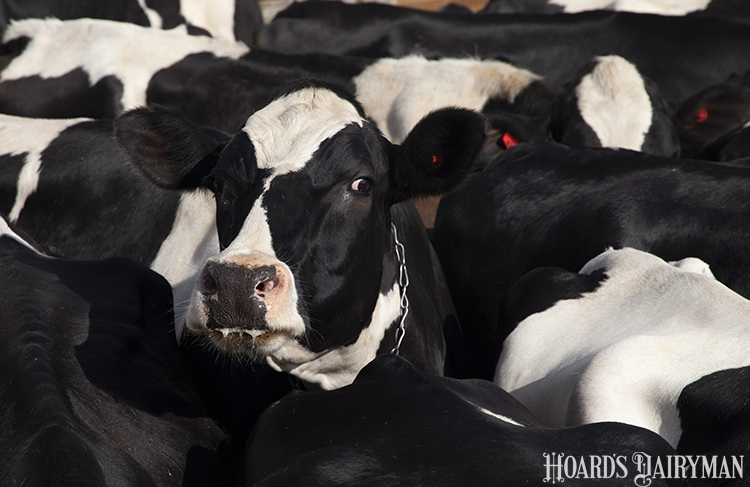
One lesson the past year and a half taught us is that our food supply chain is fragile. While we have certainly experienced food chain disruptions before, Jeremy Marchant from the USDA ARS Livestock Behavior Unit explained that interruptions are typically small, only affecting local or regional markets.
“These incidents disrupt a single link in the chain,” said Marchant during the Dairy Cattle Welfare Council’s annual symposium. “What we saw with COVID-19 was a completely new animal. It caused disruption on a whole new scale, and probably in ways we did not foresee.”
The dairy industry came face first with its own limitations when some producers had to throw away milk that didn’t have a processing home. The shock felt by the pandemic, especially initially, hit the livestock industry harder, though, and in ways beyond the food produced.
Repercussions at the farm level
Marchant explained that the supply chain includes inputs (feed and vet services, for example), production, processing, and retail. The connecting link between all of these areas is the need for labor.
“COVID-19 affects people, and people are the common denominator across all links in the chain,” Marchant said.
The pandemic first hit the retail and restaurant sectors, but then it quickly took a step back to processing. The first slaughter plant closure took place on March 27, 2020. Within the next two months, Marchant said that 48 closed packing plants had closed for some period of time.
“We had decreased slaughter capacity,” Marchant said. “This caused downstream impact.”
When closures were at their highest level, broiler slaughter was down 12% compared to year ago levels, and the number of beef cattle slaughtered by month was 27% below the year before. Month over month, there was a time when swine slaughter fell by 26%, but upwards of 55% of slaughtering capacity was lost for some shorter time periods.
This not only affects the amount of food available on store shelves. The implications of limited slaughtering ability are felt at the farm level, and Marchant noted that this can lead to animal welfare issues.
“We don’t have flexibility in terms of barn accommodations,” he explained. “With no available slaughter capacity and no overflow accommodations, the immediate issue will be overcrowding.”
One temporary solution to slow animal movement through a production system is to flatten growth curves. Marchant said this can be done in a number of ways, including the removal of growth promotion feed additives, reduced dietary energy, reduced dietary electrolyte balance, and altered amino acid balance.
Farms can also limit growth by restricting feed access, reducing floor space per animal, limiting water access, or raising temperatures in the barn by cutting back ventilation rates. However, these practices can cause hunger, aggressive behaviors, heat stress, and injuries.
“Clearly, when we think about reducing growth, we may have some effect, but we also have negative welfare consequences,” Marchant said.
He also discussed on-farm depopulation, or euthanasia of large groups of animals. This is a worst-case scenario, and he said that when large groups of animals are killed at one time, “it is extremely difficult to guarantee euthanasia, or a good death, at all.” At this point, it becomes both an animal welfare and a public image concern.
What we learned
“Covid-19 highlighted the fragility of the U.S. livestock production system, in terms of getting product from farm to fork,” Marchant said.
“As an individual link in the chain, you have to focus on what you can control,” he added. This includes having emergency plans in place, in case the supply chain breaks above or below your farm.
In general, Marchant said we have very little elasticity in our current supply chains. “We need to think about building in flexibility,” he stated. “Instead of fragility, we need resilience.”








